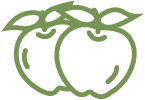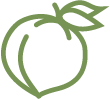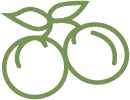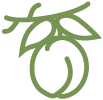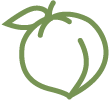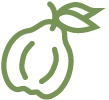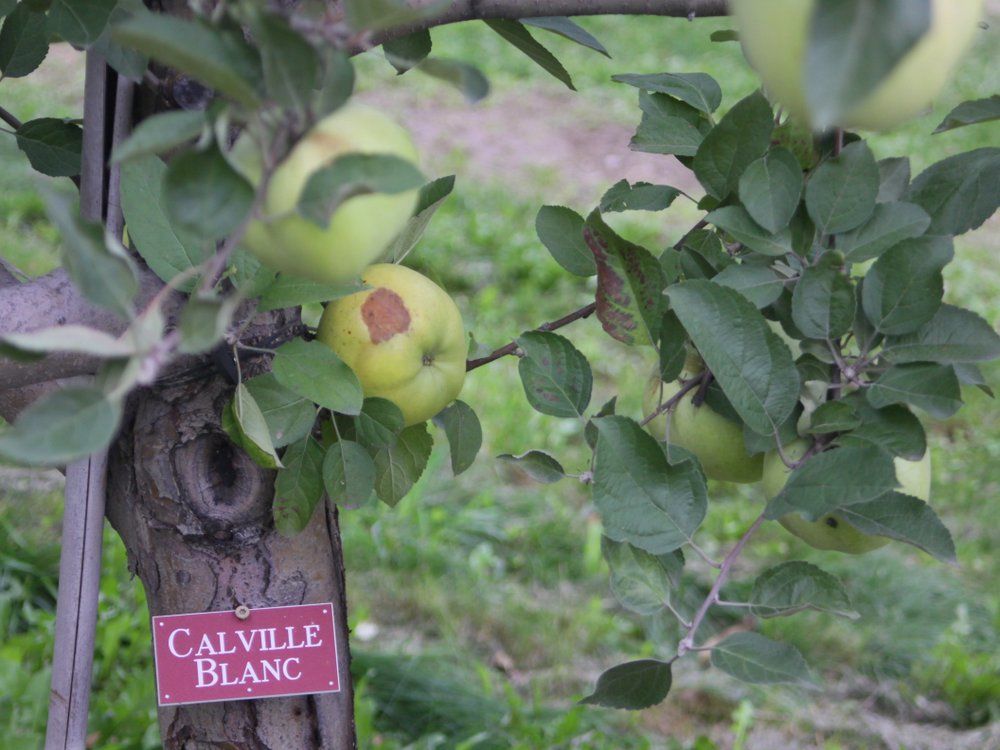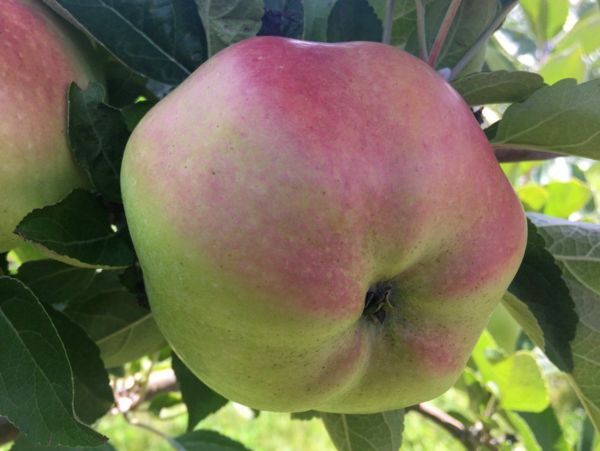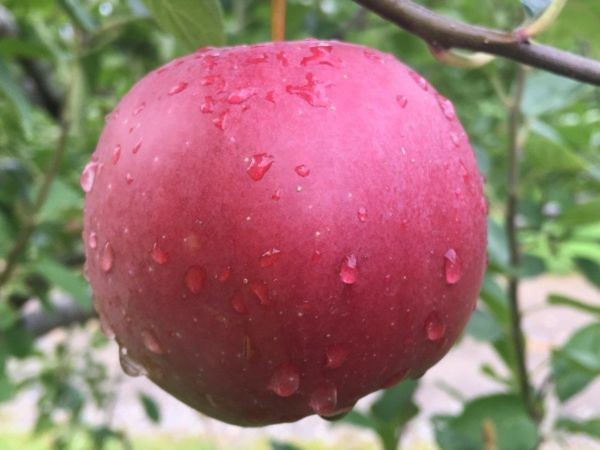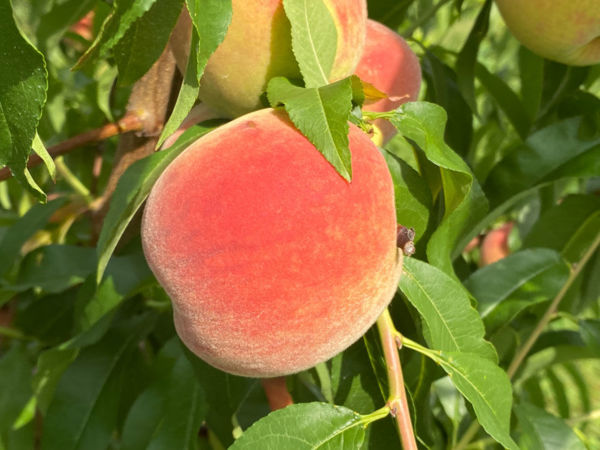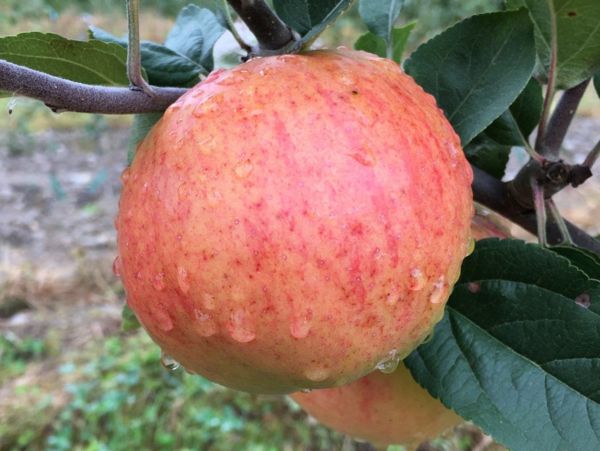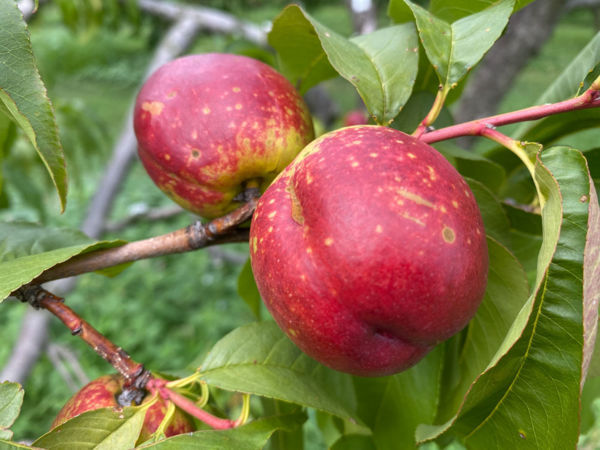An attractive, highly disease-resistant apple, ideal for organic growers.
Calville Blanc Apple on G.210 (Spring 2025)
You are viewing a tree that will ship in Spring 2025. You can also find trees for Spring 2024.
The distinctively ribbed culinary apple from France. Also known as Calville Blanc d'Hiver, White Winter Calville, Rambour a Cotes Gros, Blanche de Zurich.
Calville is a slow and shy bearer with some susceptibility to scab, fireblight, and powdery mildew, but its late bloom time does protect it from frost damage. The tree is vigorous and tends to a vase-like structure with weepy branches. In cooler regions it should be planted on a site where it will receive full sun in order to properly ripen the fruit. Fruit of the best quality will not be obtained until the tree has cropped several times.
Calville Blanc is first recorded as Blanche de Zurich in 1598, and it is reported to have been grown in the garden at Versailles in the early 1600s. It is still considered the culinary apple par excellence in France, where its biting acidity and firmness are valued especially in baking tarte aux pommes. The medium-sized, squat fruit has a very distinctive appearance: its prominent lobes produce a shape that is more like a bell pepper, and the reddish dimpling on its skin give it a tendency to appear blemished even when it is not. The skin color varies according to conditions, from green to ivory, often with an orange blush, and the snow-white flesh is dense, and crisp. The apples have a tendency to drop before they are fully ripe, and uneven ripening necessitates multiple pickings.
Calville has the highest known vitamin C content of any apple. When it is first harvested, the acidity is too high to be palatable to most, but after at least a month of storage, the flavor mellows and spiced pear and pineapple notes develop. During storage the skin will also become yellow. Calville is valued for adding acid and a rich aroma to cider blends, and a few cider makers even make single-variety ciders from this apple.
The unique shape of Calville Blanc apples makes them easy to spot in Monet's Still Life with Apples and Grapes. Calville Blanc was also among the apple trees grown at Monticello by Thomas Jefferson.
The Fruit
Fruit Type
Category: Apple
Subcategory:
Heirloom, Cider, Cold-Hardy, Hot-Climate
Fruit Uses & Storage
Uses: fresh eating, cider, baking
Cider classification: sharp
Storage duration: three plus months (approximate, depending on storage conditions)
Fruit Appearance
Skin color: green
Flesh color: white
Fruit Origins
Parentage: unknown
Origin: France or Germany
Introduced in: 1600
Introduced by:
The Environment
Calendar & Geography
USDA zones: 4 - 8
Chill hours: 1000
Ripening date: Oct 27 (approximate, in New York State) + 42 days after McIntosh
Tree Height & Spacing
glossary
Rootstock: G.210 Rootstock
Rootstock size class: Semi-Dwarf (40% of Standard)
Tree spacing (natural spread of tree): 12'
Good for wildlife planting? N
Diseases & Pests
glossary
Apple Scab: Susceptible
Fireblight: Susceptible
Powdery Mildew: Susceptible
Pollination
Pollination Factors
glossary
Bloom group: 3
Is it self-fertile? N
Is it fertile? Y
Ploidy: Diploid
Rootstock size class:
Semi-Dwarf (40% of Standard)
Pollination Partners
This table shows the first few results from a full search for pollenizers of Calville Blanc Apple on G.210. Please see our Pollenizer Search to run other queries and read how the application uses various factors. Also read more about fruit tree pollination.
See all pollination matches for Calville Blanc Apple on G.210
Featured Products
A few things we're loving right now...
A full-flavored, freestone white peach.
A traditional semisharp cider apple from Spain.
A widely-grown, large, yellow-fleshed nectarine.

